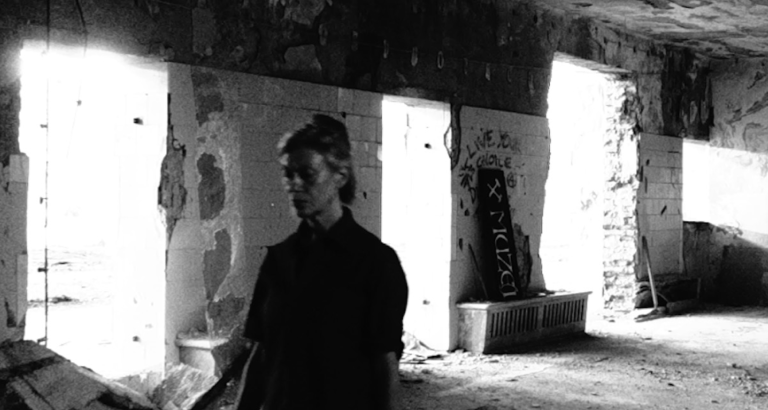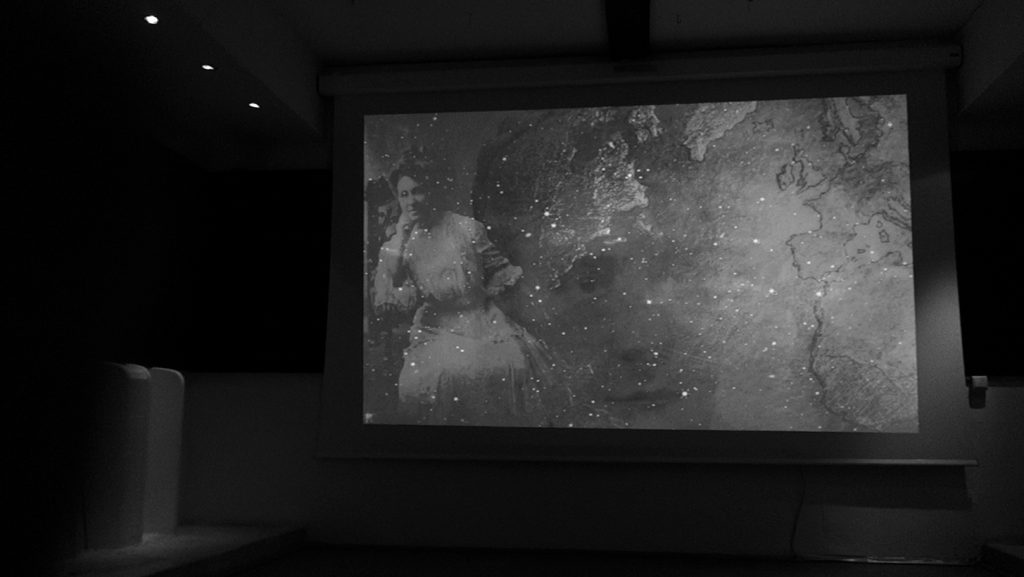
Common Ground
Multimedia installation
Common Ground is a creative reading of fragments from the late works of Istrian poet, writer, teacher and revolutionary Giuseppina Martinuzzi (1844–1925) through multimedia installation art.
Drawing on feminist, Marxist and post-colonial literature, and though a montage of archival imagery, original photography and video, environmental recordings, electronic music and spoken word, the project traces connections across time and spaces: between Martinuzzi’s writings and the work of other American, Indian, African and European 19th century pioneers of intersectional feminism; and between social histories of Labin, Trieste and Istria in the early 20th century, and herstories of past/present global movements for social justice and emancipation.
Common Ground was first exhibited at 4th Industrial Art Biennial Istria (2023) in the ex-mining complex of Lamparna, Labin. The installation comprises the audiovisual works Earth & Sky and Ingiustizia, a stereo soundscape, chalk drawings and found objects.
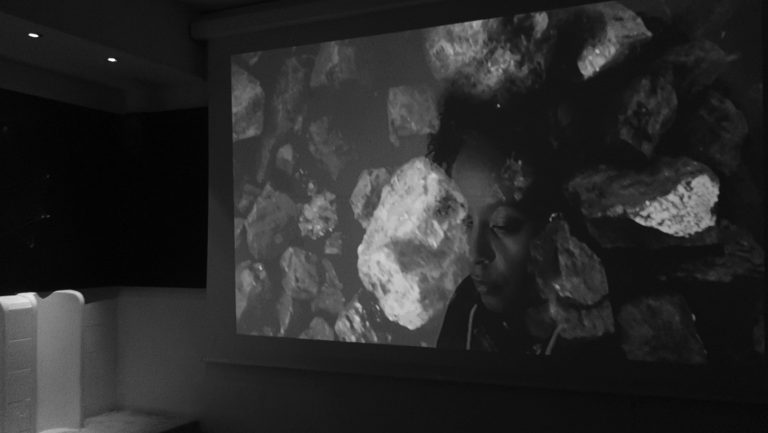

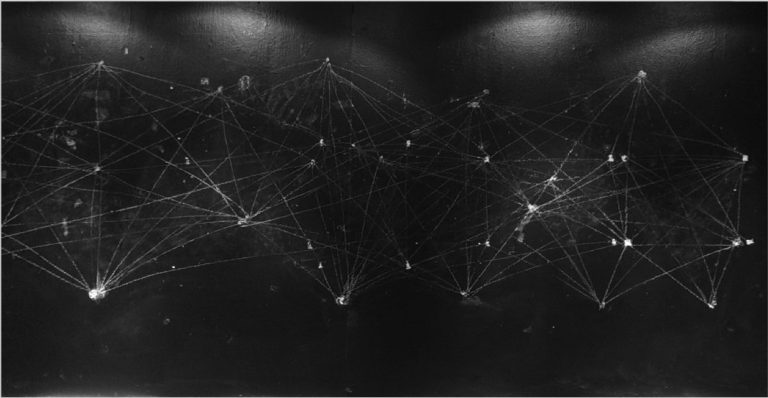
About Giuseppina Martinuzzi
A ‘minor’ literary figure, still almost unknown outside Istria, Giuseppina Martinuzzi can be considered a precursor of contemporary frontier intellectuals, in her concern with difference and belonging, with transgressing borders and boundaries, and in her struggle for intellectual freedom. Her lucid descriptions of the interlocking nature of women, race and class oppression, and her activism and commitment to social justice, mark her distance and difference from other (white, bourgeois) European and US feminists of her time.
Martinuzzi’s late poetry and essays denounce the divisive and oppressive forces of partiarchial racial capitalism, colonialism and fascism present in her (and our) time; they also envisage her beloved and troubled native land of Istria as a possible ‘common space’, a place of transnational socialism and (comm)unity in diversity, a (future) space of radical love, social justice and belonging for all people.
Born in 1844, Martinuzzi embraced the ideals of French Revolution and witnessed the subsequent radical political changes and social struggles which lead to the development of present-day European states. In the latter part of the century, she became a critical voice against nationalism and embraced the internationalist, socialist and later communist cause, while also developing a more personal, feminist reading of Marx and Engels ideas. Her political activism and educational work aimed at uplifting and emancipating not just women but all the disadvantaged groups in her society, as well as promoting dialogue and strengthening solidarities beyond the boundaries of ethnicity and nationality. Her feminism, like that of bell hooks, Angela Davies and Zillah Eisenstein, is a feminism which Eisenstein defines as plural, transnational, rejecting false race/gender borders and constructed ‘others’.
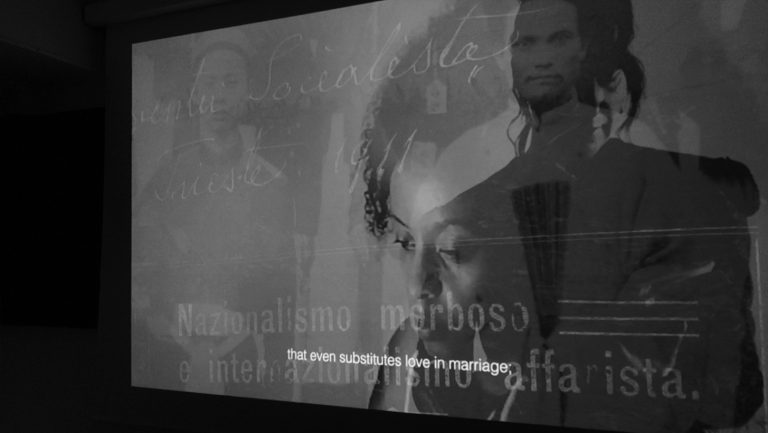
Project info
My interest in Giuseppina Martinuzzi’s and the social histories of Istria was sparked by a research in my late father’s postal history collection and historical archive, where I had found a publication by a group of Istrian Marxist historians documenting the events of the 1921 Labin Republic, the birth of the Communist Party in Istria and Martinuzzi’s life and work.
In 2021 I made a trip to Labin for the 100th anniversary of the Republic. In that occasion I was given access to the Martinuzzi archive at the Labin National Museum, and spent some time exploring her writings and the social history of the area with the help of local historians, guides and the museum’s curators, taking photos and videos, and recording environmental sounds and spoken word materials.
After this initial research, a constellation emerged as I began to explore and revisit herstories and writings of other 19th and early 20th century women across the world, contemporaries of Giuseppina Martinuzzi, whose understanding of the interconnected nature of women, race and class struggles, and commitment to social justice and education related in many ways to Martinuzzi’s perspective and work. This constellation of women formed the basis for Earth & Sky, the first of the two audiovisual works included in the Common Ground installation project. The movements of Martinican dancer Yolenn Col, featured in the video montage, and a series of chalk drawings in the black walls of the Lamparna installation space, reflect and expand on these interconnections.
The project was furthered through a commission for the 4th Industrial Art Biennial in Istria in December 2021, an arts residency at the ex-mining complex of Lamparna in Labin in April 2022, and a EUS funded online micro-research arranged by Labin Art Express in June 2022. This research consisted in a series of creative dialogues with a small group of Istrian female/feminist poets, cultural activists and academics, which included Isabella Flego, Loredana Bogliun, Martina Damiani, Daniela Mohorovic, and researcher Francesca Maria Lacaita. During these sessions we used fragments of Martinuzzi’s writings, archival materials and poems by some of the women in the group to explore herstories and personal experiences relating to themes of borderland and the female body, ethnicity, language and identity, racial capitalism and colonialism, nationalism and fascism, war and pacifism, and their relations to memory, place and the global present.
After this period of research, I begun developing Ingiustizia, the second audiovisual work in the Common Ground installation. This montage comprises visual fragments of Martinuzzi’s original publications on nationalism, capital and labour, partly voiced by Ethiopian-Eritrean-Italian researcher Miltezegga Abduk Mustafa, early 20th century images from my father’s collection and other historical archives, and photographs I took in London in 2021-22 during Black Lives Matter demonstrations, protests against violence in Gaza, Grenfell silent walks and other gatherings.
The two audiovisual works were displayed in Lamparna, Labin. This semi-derelict, historical building is part of an ex-mining complex which originally housed common spaces for the miners near the entrance of the underground mining tunnel and its landmark tower building. Parts of the complex have been restored and are now used for exhibitions and concerts. Together with the annexed public library, Lamparna constitutes the heart of new Labin’s cultural life.
